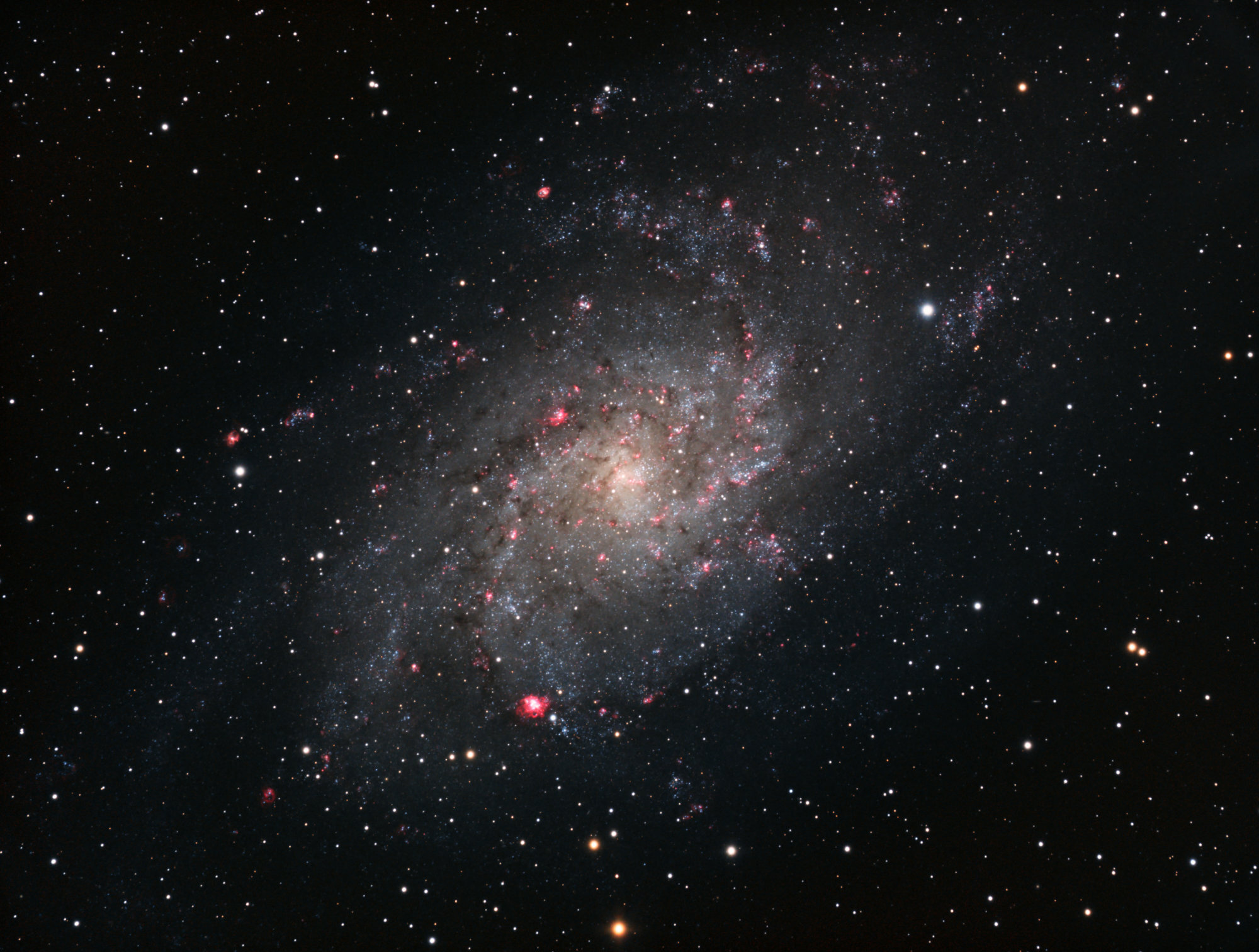
Images
M16 | Sh2-49
M16 is also known as the Eagle Nebula, but the central part of this nebula is made even more popular by the Hubble Telescope, and is nick-named the pillars of creation. Here in a narrowband version with a total of almost 40h of exposure.
Perseïd Meteor
An annual event, the Perseid meteor shower. This time an exceptional large meteor was captured with a long lasting glow. Captured with the new Sigma 15mm f/1.4 diagonal fisheye lens.
M4
M4 is a globular cluster in the constellation Scorpius. It is located at a distance of 50,000 light years from Earth. During processing some interesting green stars stood out which appear to be RR Lyrae variable stars, often found in clusters. The intense green colour is an artefact of the way broadband images like these are taken.
Caldwell 45
Caldwell 45 is a small galaxy in the constellation Boötes, art of the Virgo supercluster of galaxies. It is also known as NGC5248. This was an older dataset when processed, and calibration is not perfect, as is visible in the uneven background. But details in the galaxy have been fairly well capture.
NGC884, NGC869
A beautiful double cluster of NGC884 and NGC869 in the constellation Perseus. These objects are pretty bright and were already discovered by the ancient Greeks. Here captured using an OSC camera.
NGC5905, NGC5908
NGC5905 and NGC5908 are two neighbouring galaxies in the constellation Draco. They form a very nice contrast with NGC5905 being a beautiful spiral galaxy (SAb), that is visible face-on, while NGC5908 is a barred spiral galaxy (SBb) and visible edge-on view.
Caldwell 6
Caldwell 6 is a beautiful planetary nebula in the northern skies, nicknamed Cat’s Eye Nebula. A particular challenge is to pull out enough detail from the super bright nucleus while still seeing the intricate details of the filaments in this emission nebula.
NGC4216, NGC4206, NGC4222
The Virgo cluster allows for some great galaxies to photograph. Here NGC4216 together with its neighbouring galaxies NGC4222 and NGC4206 in an RGB exposure. The second image from the remote observatory, with more han 20h of data collected over four nights.




















